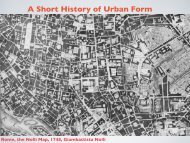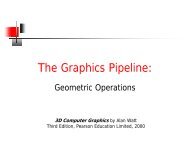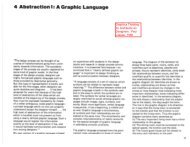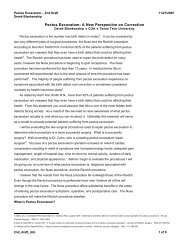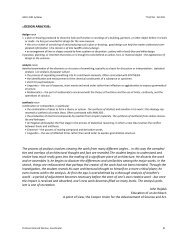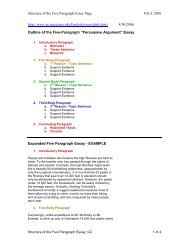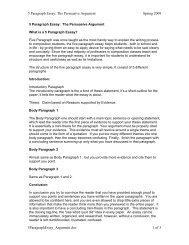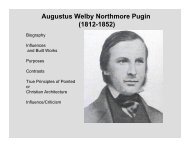The Eyes of the Skin
The Eyes of the Skin
The Eyes of the Skin
Create successful ePaper yourself
Turn your PDF publications into a flip-book with our unique Google optimized e-Paper software.
PART 29ARCHITECTURE AND THE HUMAN FIGUREWe tend to interpret a building as an analogueto our body, and vice versa.Caryatids <strong>of</strong> <strong>the</strong> Erech<strong>the</strong>um on <strong>the</strong>Acropolis (421- 405 BC).© Copyright <strong>The</strong> Trustees <strong>of</strong> <strong>the</strong> BritishMuseum.10Since <strong>the</strong> dynasties <strong>of</strong> ancientEgypt, measures<strong>of</strong> <strong>the</strong> human body were used inarchitecture. <strong>The</strong> anthropocentric traditionhas been almost entirely forgotten inmodern times.Aulis Blomstedt's study <strong>of</strong> a proportionalsystem for architecture based on <strong>the</strong>Pythagorean subdivision <strong>of</strong> a basic 180 cmmeasure (presumably from <strong>the</strong> early 1960s).<strong>The</strong> Aulis Blomstedt Estate/SBlomstedt.As <strong>the</strong> preceding brief survey suggests, <strong>the</strong> privileging <strong>of</strong> <strong>the</strong> sense <strong>of</strong>sight over <strong>the</strong> o<strong>the</strong>r senses is an inarguable <strong>the</strong>me in \'\Testern thought,and it is also an evident bias in <strong>the</strong> architecture <strong>of</strong> our century. <strong>The</strong> negativedevelopment in architecture is, <strong>of</strong> course, forcefully supported byforces and patterns <strong>of</strong> management, organisation and production as wellas by <strong>the</strong> abstracting and universalising impact <strong>of</strong> technological rationalityitself. <strong>The</strong> negative developments in <strong>the</strong> realm <strong>of</strong> <strong>the</strong> senses cannot,ei<strong>the</strong>r, be directly attributed to <strong>the</strong> historical privileging <strong>of</strong> <strong>the</strong> sense <strong>of</strong>vision itself. <strong>The</strong> perception <strong>of</strong> sight as our most important sense is wellgrounded in physiological, perceptual and psychological facts.74 <strong>The</strong>problems arise from <strong>the</strong> isolation <strong>of</strong> <strong>the</strong> eye outside its natural interactionwith o<strong>the</strong>r sense modalities, and from <strong>the</strong> elimination and suppression <strong>of</strong>o<strong>the</strong>r senses, which increasingly reduce and restrict <strong>the</strong> experience <strong>of</strong><strong>the</strong> world into <strong>the</strong> sphere <strong>of</strong> vision. This separation and reduction fragments<strong>the</strong> innate complexity, comprehensiveness and plasticity <strong>of</strong> <strong>the</strong>perceptual system, reinforcing a sense <strong>of</strong> detachment and alienation.In this second part, I will survey <strong>the</strong> interactions<strong>of</strong> <strong>the</strong> senses andgive some personal impressions <strong>of</strong> <strong>the</strong> realms <strong>of</strong> <strong>the</strong> senses in <strong>the</strong>expression and experience <strong>of</strong> architecture. In this essay I proclaim asensory architecture in opposition to <strong>the</strong> prevailing visual understanding<strong>of</strong> <strong>the</strong> art <strong>of</strong> building.38THE EYES OFTHE SKINPART 2 39




